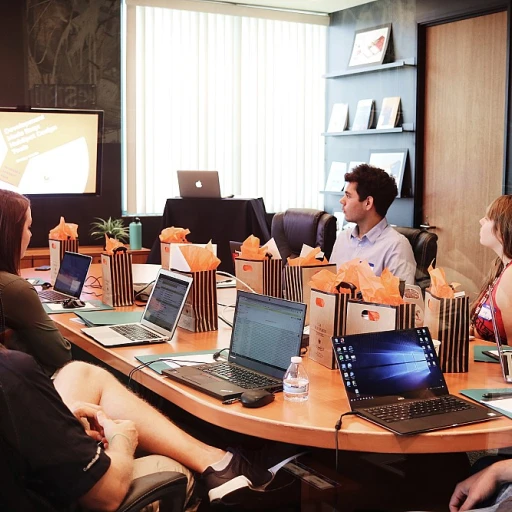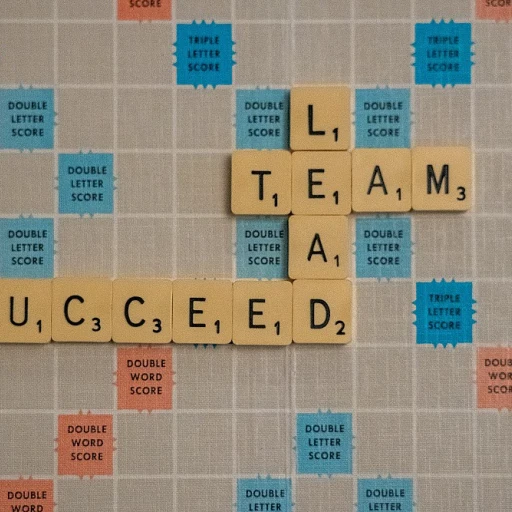
Understanding the Trusted Workforce 2.0 Initiative
Recognizing the Importance of the Trusted Workforce 2.0 Initiative
The Trusted Workforce 2.0 Initiative is a pivotal turning point in transforming how we perceive and execute human resources communication within federal and national landscapes. Spearheaded by insights from federal executive agents and security personnel, this extensive program aims to redefine personnel vetting processes that align with national security objectives. As organizations grapple with complexities surrounding security clearances and background investigations, the Trusted Workforce Initiative brings a fresh perspective by emphasizing a stringent yet transparent approach. In the modern workforce, ensuring smooth access to classified information requires more than standard background checks. The initiative fosters a robust system that elevates a director national’s mandate to oversee personnel security measures. With continuous vetting mechanisms in place, the program minimizes insider threats while maintaining high security clearances. Personnel vetting under this initiative undergoes a meticulous process of suitability credentialing and security executive oversight. As the federal government strives to protect sensitive information, engagement in continuous background investigations becomes not just ideal, but necessary. Through this initiative, the executive agent supervisory roles are clearly defined, ensuring a seamless flow of top secret operations and access to classified data. The Trusted Workforce 2.0 Initiative embodies a vision of security clearance modernization while addressing national security demands. To fully grasp its implications, understanding how HR advisory impacts this communication system is crucial in paving the way for transparent processes. Learn more about how HR advisory impacts communication. Personnel security in the context of this initiative goes beyond traditional vetting; it is a testament to the evolving dynamics of the workforce initiative. As continuous vetting protocols and processes are reinforced by government and federal measures, safeguarding national interests remains a top priority.Enhancing Transparency in HR Communication
Unveiling Clarity in Workforce Communication
In today's complex landscape, the Trusted Workforce 2.0 Initiative prioritizes transparency in human resources communication. This strategic focus, essential for maintaining national security standards, necessitates an open approach in communicating processes like personnel vetting, security clearance, and continuous vetting. Effective communication ensures that personnel understand their roles and the background investigation protocols they are subjected to. The initiative also emphasizes openly addressing topics such as insider threats and personnel security concerns. This ensures that members of the workforce are informed about both the security measures in place and the expectations set by federal government guidelines. Enhancing transparency in communication isn't just about providing clearer processes. It's also about building a foundation of trust between executive agents, directors, and the workforce. Through improved clarity, the initiative seeks to reduce misunderstandings related to security clearance processes and suitability credentialing. The director national alongside the security executive teams are integrating new tools and programs to facilitate better communication channels. By being transparent, HR departments can foster an environment where employees feel adequately informed and secure in the knowledge that the security clearance process is fair and thorough. Integrating transparency in communication is also about keeping the workforce updated with continuous background investigations and the dynamic nature of national security operations. This transparency reinforces trust attributed to the institution, ultimately ensuring that individuals have sustained peace of mind regarding their access clearance and the overall vetting process. For a deeper understanding of how effective communication shapes the workforce climate, explore the impact of HR advisory on effective communication.Building Trust Through Effective Communication
Fostering Trust in Sensitive Information Handling
One of the cornerstones of the Trusted Workforce 2.0 Initiative is fostering trust, especially when it comes to handling sensitive information and ensuring security. The federal government places great emphasis on transparency within the HR communication framework. This approach not only secures the workforce but also fortifies the vetting processes vital to national security.
Effective communication is pivotal when discussing personnel vetting, security clearances, and background investigations. The process is overseen by agencies and executives responsible for national security, such as the Defense Counterintelligence and Security Agency (DCSA). As the trusted workforce initiative evolves, clear and consistent communication about these processes strengthens trust between government entities and their personnel.
Security executives and directors of national security have a crucial role in communicating the continuous vetting process. Providing clear insights about ongoing background checks and the suitability credentialing process ensures personnel are well-informed and engaged.
Moreover, access to classified information and handling potential insider threats requires elevated levels of trust and a strong reliance on precise communication channels. As personnel undergo vetting for security clearances, effective communication from HR can help mitigate misunderstandings and foster a culture of openness and reliability.
The goal is not only to respond to security challenges but also to preempt them by maintaining an atmosphere of trust through transparent communication. Such strategies can effectively bridge the gap between executive leaders and workforce members, thereby enhancing the overall efficiency of the credentialing executive process within the federal government.
Adapting to the Challenges of Modern Workforce Communication
Meeting the Challenges of Modern Workforce Communication
As the Trusted Workforce 2.0 Initiative unfolds, adapting to the ever-evolving landscape of workforce communication is crucial. In the federal government sector, where the stakes are high due to national security concerns, the importance of optimizing communication cannot be overstated. This initiative addresses several key challenges, ensuring that communication remains transparent and trusted.
One primary challenge is maintaining effective communication throughout the vetting process. Security clearance and background investigations are pivotal to personnel security, and ensuring continuity in communication during these stages is essential for fostering trust. A consistent and clear dialogue between security executives and personnel undergoing these vetting processes helps in reducing any miscommunications and uncertainties.
Another aspect is the necessity of continuous communication within programs related to insider threats and suitability credentialing. By keeping the discourse active and informative, the executive agents are better positioned to assess risks, ensuring that personnel with access to classified information are thoroughly vetted. Continuous vetting is a part of this process that requires agile communication systems, especially with the integration of digital tools.
In the realm of national security, adapting communication to combat potential challenges also means leveraging technology effectively. The digital transformation allows the federal government to enhance their executive credentialing processes, enabling faster responses and better access to necessary information. The director of national security and the security executive agents play a pivotal role in ensuring this adaptation is smooth and comprehensive.
The modern workforce must navigate these changes with an understanding of the necessary security requirements, promoting an informed and secure environment where trust is a priority. By building this crucial adaptability, the trusted workforce can more effectively contribute to the overarching goals of national security and personnel security.
Leveraging Technology for Better Communication
Utilizing Technological Advancements for Effective Interaction
The modern human resources landscape is changing rapidly, with technology playing an increasingly vital role in communications strategies. As organizations implement the Trusted Workforce 2.0 Initiative, leveraging technological advancements becomes paramount to ensure effective communication and meet necessary security clearance requirements.
Many organizations are now incorporating comprehensive continuous vetting systems to streamline personnel vetting processes. A robust system enables security executives to monitor and evaluate employees' status continuously rather than relying solely on periodic, intensive background investigations. This real-time vetting supports efforts to maintain national security and mitigates insider threat risks.
The role of advanced technologies in enhancing HR communication cannot be overstated. Implementation of collaborative software solutions and secure communication platforms is crucial for bridging gaps across federated teams, as well as improving transparency in suitability credentialing and personnel security processes.
- Online Platforms: Integrating secure platforms for distribution of information regarding security clearances, top secret access, and other critical data helps secure sensitive information against unauthorized access.
- Artificial Intelligence: AI can optimize background investigations, ensuring rapid access and analysis of comprehensive data sets while aligning with the objectives of director national and related agencies.
- Cloud Technologies: These technologies support the storage and management of vast amounts of personnel data seamlessly, enhancing the operational efficiency of the personnel vetting process.
As these technological tools evolve, so must the approaches to integrate them effectively into HR communication strategies. It's critical for organizations to remain adaptable and prioritize security while ensuring personnel feel engaged, trusted, and a part of a secure workforce.












